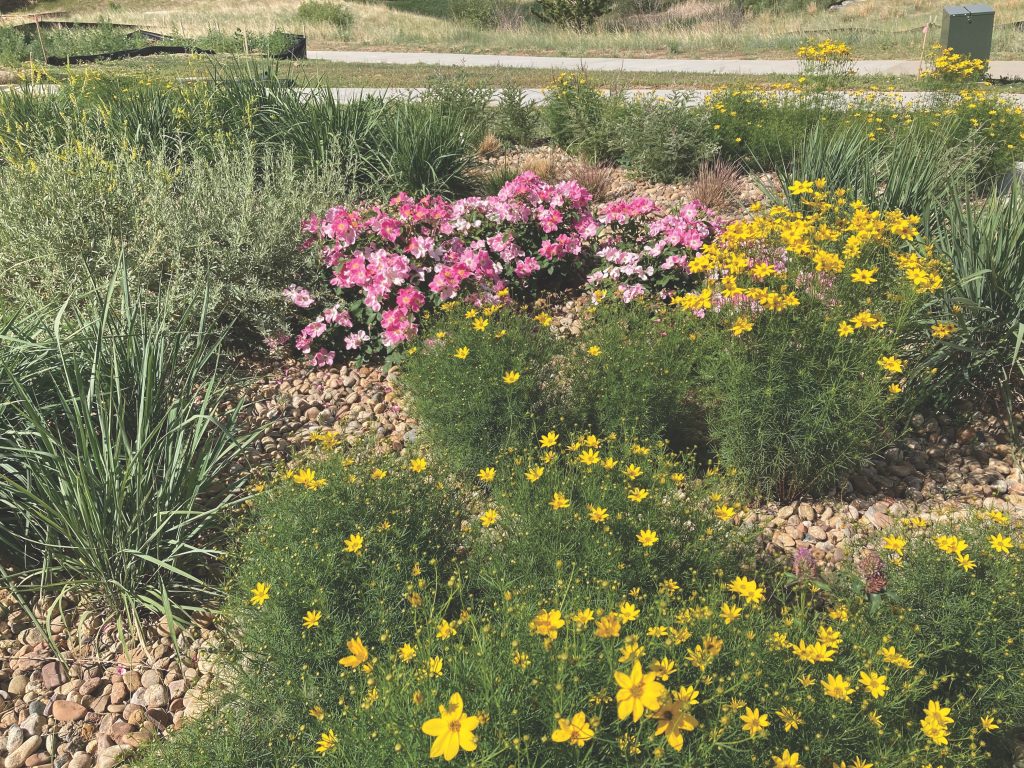
Part of Amy Yarger’s work at the Butterfly Pavilion is to boost biodiversity — an increasingly daunting task.
“People often say, ‘Pollinators are cool — they’re cool looking, they like flowers, we like flowers,’” says Yarger, who is the horticulture director of the nonprofit invertebrate zoo located in Westminster. “But to actually say [pollinators have] an impact on human health — those people who aren’t interested in biodiversity for its own sake are going to say, ‘Human health is important, saving people’s lives is important.’”
Yarger is referring to a recent study that directly links human mortality with a decrease in pollinators. The study, published on Dec. 14 in the journal Environmental Health Perspectives, found that 3% to 5% of fruit, vegetable and nut production is lost because of inadequate pollination, resulting in an estimated 427,000 additional human deaths annually from lack of healthy food consumption and associated disease.
On top of that, the United Nations Environment Program (UNEP) says human activity is causing an unprecedented decline of nature — the sixth mass extinction and the largest loss of life since the dinosaurs. The organization estimates one million plant and animal species are currently threatened with extinction.
Pollinators are the small, but mighty, solution.
It’s estimated that upwards of 80% of flowering plants require pollination and 35% of food crops depend on pollinators. Pollinators are part of Yarger’s focus at the Butterfly Pavilion.
“Pollinators are foundational to our food systems and to our ecosystems,” she says.
There are about 350,000 pollinator species in the world, including vertebrate species, like birds and bats, and invertebrates like bees, flies, beetles, spiders and butterflies. Colorado’s varied terrain helps create habitat for an array of pollinators: more than 900 bee species, 250 butterfly species and more than 1,000 moth species.
But pollinators aren’t immune to the global loss of life — a U.N.-sponsored report in Nature found that 40% of invertebrate pollinators and 16.5% of vertebrate pollinators are threatened with extinction. This is due to factors including habitat destruction, chemical pollution, parasites and pathogens.
Matthew Smith is the lead author of the study linking human mortality to inadequate pollination. He says it is one of the only studies that quantifies the relationship between pollinators and human health in this way.
“This [study] is saying, if you had a lot of pollinators, and they were diverse, how much more food could you produce? And, what health implications would that have?” Smith says.
According to the study, plants that rely on animal pollination are important for human health and, when eaten, can be protective against noncommunicable diseases like heart disease, stroke, cancer and diabetes. It finds less pollinated plants drive loss of economic value, widening of inequality in diet and health outcomes, and “excess mortality globally.”
Smith’s team published their research in the middle of the United Nations Biodiversity Conference in December, where representatives from 188 governments adopted four goals and 23 targets for 2030 in a “landmark U.N. Biodiversity agreement.”
Part of that agreement includes measures to mitigate nature loss, including protecting 30% of the planet’s lands, oceans, coastal areas and inland waters. It also includes enhancing ecosystem functions and nature-based solutions like pollination.
Patrick Tennyson, president and CEO of the Butterfly Pavilion, wasn’t at the conference but was tuned into its outcome.
“It’s great to hear the drumbeat that conservation organizations have been beating for years resonating with communities and nations, it’s starting to become important,” he says.
Tennyson says he wants the pavilion to be a leader in invertebrate research and conservation globally, while maintaining its local presence.
“These animals are everywhere, and they need protection and conservation everywhere,” he says. “And so our work had to grow and had to be more international in focus.”
Some of that growing work comes in the shape of its local pollinator habitat initiatives and pollinator districts, which restore habitat in urban and suburban green spaces around the state.

The Butterfly Pavilion’s Baseline project, the first pollinator district located in Broomfield, is seeing twice as many pollinator species since the project began in 2019, according to Yarger.
Yarger says she wants to emulate this success globally, with ongoing projects in places like the Turks and Caicos Islands, Mongolia and Kenya.
“It’s a very local concern, like, we can make habitat better here [in Colorado],” Yarger says. “But it’s really about getting connected with the whole world and pulling together and making the habitat better.”
Yarger is driven by sharing her passion with people and inspiring curiosity — from the 60,000 students that visit the Butterfly Pavilion annually to working with community members on garden projects.
That connection, she says, is possible for everyone.
“Everyone’s going to benefit from a pollinator in some way,” Yarger says. “And the good news is, everyone, no matter who you are, can benefit a pollinator.”














